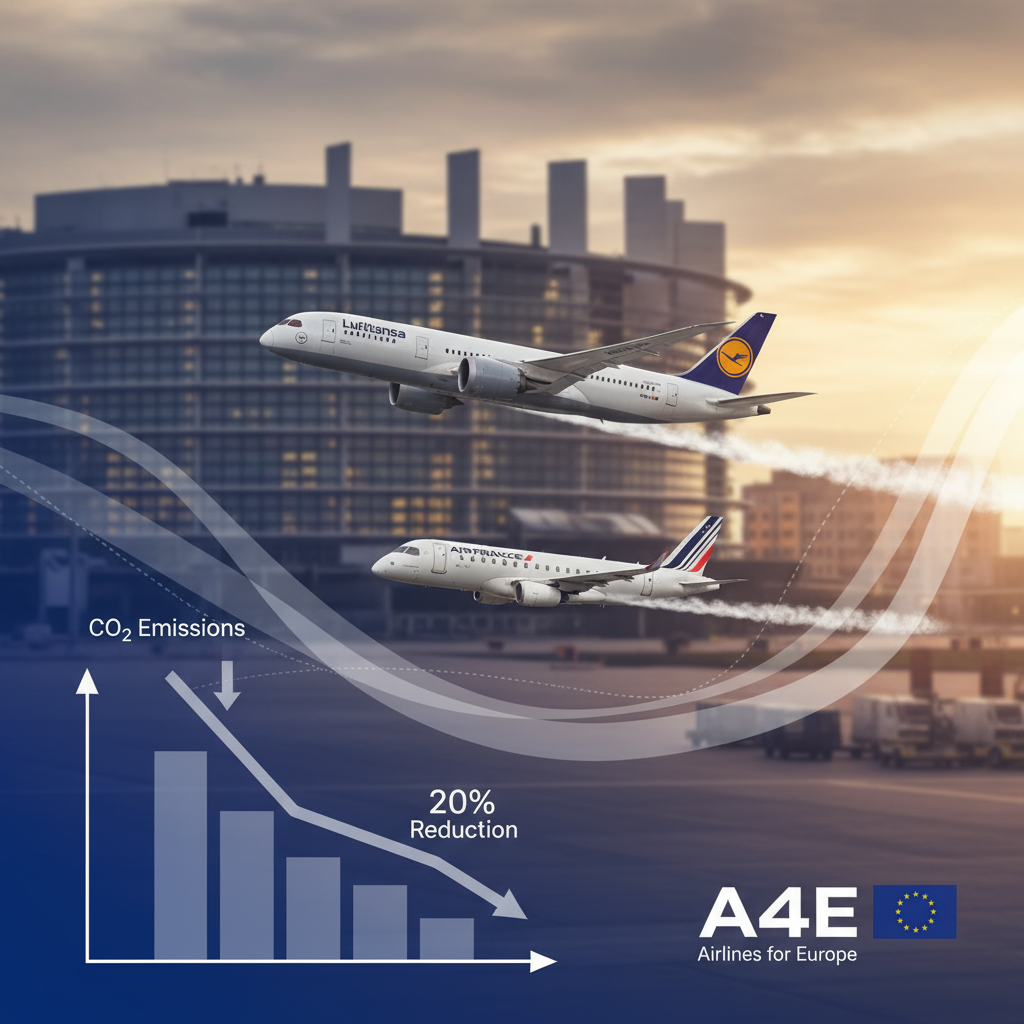Physical Address
304 North Cardinal St.
Dorchester Center, MA 02124
Physical Address
304 North Cardinal St.
Dorchester Center, MA 02124
Global aviation news tracker
Global aviation news tracker

A4E says airspace reform could cut EU aviation CO2 by up to 20%.
Airlines for Europe (A4E) is pressing EU policymakers to speed up airspace reform, arguing that optimized routes and tighter air traffic control (ATC) coordination can deliver big emissions and cost wins. The trade group links the push to the Single European Sky initiative and frames reform as an immediate, operational way to reduce aviation’s climate footprint while improving service for passengers.
According to A4E, better routing and fewer holding patterns would shorten flights, burn less fuel and cut CO2 emissions — the group estimates reductions of up to 20% in some sectors. Air traffic fragmentation across national borders forces planes off ideal tracks; harmonised procedures and modernised ATC could reclaim inefficiencies airlines say are avoidable without new hardware.
The ask is practical: accelerate implementation of Single European Sky measures so airlines can fly more direct tracks, reduce time in the air and lower costs. For carriers that operate across multiple EU states, operational efficiency directly translates to fuel savings and lower ticket pressure. For passengers, the benefits include fewer delays and often faster point-to-point travel.
A4E’s call arrives amid broader pressure on aviation to decarbonise through sustainable aviation fuel (SAF), aircraft tech and operational fixes. The organisation positions airspace reform as one of the quickest returns on investment: changes to procedures rather than entire fleets. While the Single European Sky program has long been debated in Brussels, A4E wants tangible, faster progress — both for environmental targets and to relieve industry costs that ultimately affect travellers.
Whether EU institutions accelerate implementation will shape near-term emissions and costs for European carriers. For now, A4E is putting operational airspace improvements front and centre as a realistic lever to cut CO2 and improve the flying experience across Europe.